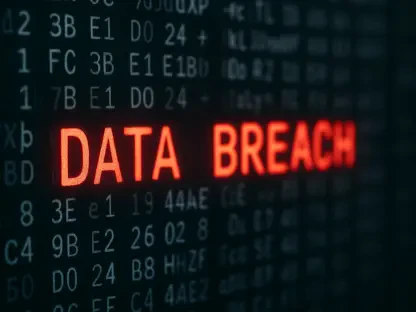In the constantly shifting arena of cybersecurity, a startling new strategy has emerged that is outmaneuvering even the most sophisticated email protection systems with alarming ease, as cybercriminals exploit Cascading Style Sheets (CSS), a fundamental tool for web design, to cloak malicious code within emails through an insidious technique known as “hidden text salting.” This method enables attackers to embed harmful or irrelevant content—completely invisible to the recipient—within messages, allowing them to bypass both conventional filters and cutting-edge defensive technologies. As email remains a primary vector for communication in personal and professional spheres, this emerging threat represents a significant challenge to digital safety. Understanding the mechanics and implications of this tactic is vital for anyone navigating the online world, as it underscores the evolving ingenuity of cyber threats and the urgent need for adaptive security measures to counter them effectively.
Uncovering a Stealthy Cyber Threat
Hidden text salting has emerged as a cunning approach that manipulates CSS properties to conceal malicious content in emails while preserving the message’s visible appearance for unsuspecting users. By altering attributes like font size, opacity, or display settings, attackers can bury substantial amounts of irrelevant or harmful text—often referred to as “salt”—within the email’s structure. This hidden content confounds security tools that rely on scanning visible text or identifying specific patterns, making it a potent tool in phishing schemes and advanced persistent threats (APTs). Its versatility across various attack types highlights the growing adaptability of cybercriminals, who exploit this method to target both individuals and large organizations. The seamless integration of such concealed elements into seemingly legitimate emails poses a unique challenge, as recipients remain unaware of the underlying danger while security systems struggle to detect the disguised threat.
The significance of hidden text salting lies in its ability to exploit a fundamental mismatch between human perception and machine analysis. While the email appears normal to the reader, the embedded salt disrupts automated detection mechanisms by diluting the malicious intent or altering the message’s context. This discrepancy allows attackers to evade even the most vigilant email gateways, which often fail to account for styling tricks that render content invisible. Research indicates that this technique is disproportionately prevalent in malicious communications compared to legitimate ones, signaling a deliberate shift among threat actors to leverage CSS for evasion. As this method continues to gain traction, it becomes clear that traditional approaches to email security are increasingly inadequate, necessitating a deeper examination of how web standards are being weaponized in cybercrime and what can be done to mitigate the risks.
Turning Web Design into a Weapon
At the core of hidden text salting is the strategic misuse of CSS properties, which are designed to control the visual presentation of content on web platforms. Cybercriminals manipulate settings such as reducing font size to zero, aligning text color with the background, or applying commands like “display: none” to ensure content remains hidden from view while persisting in the email’s underlying code. These alterations effectively deceive security systems that depend on extracting and analyzing visible text for malicious indicators. By embedding large volumes of irrelevant data, attackers dilute the email’s detectable threat level, making it appear benign to automated filters. This exploitation of a tool meant for aesthetic enhancement reveals a darker side to web design, where even basic styling elements can be repurposed into instruments of deception in the hands of skilled adversaries.
Beyond simple concealment, the sophistication of these attacks lies in the layered application of multiple CSS techniques to maximize evasion potential. Some attackers combine visibility controls with dimensional constraints, clipping content outside visible boundaries, while others tailor their methods to adapt across different email clients and devices. Such adaptability ensures that hidden content remains undetected whether viewed on a desktop, mobile app, or webmail platform. This calculated approach not only undermines keyword-based detection systems but also challenges advanced algorithms that attempt to classify email intent through textual analysis. The realization that standard web tools can be so effectively turned against security infrastructure serves as a stark warning of the innovative lengths to which cybercriminals will go, pushing the boundaries of conventional defense mechanisms and exposing critical vulnerabilities in email systems.
Targeting Key Areas of Email Structure
Cybercriminals employing hidden text salting demonstrate a meticulous understanding of email architecture by strategically placing invisible content in specific areas to optimize evasion. Common insertion points include preheaders, which are the preview snippets displayed in email clients, as well as headers, main message bodies, and even HTML attachments. Each of these locations offers distinct advantages for bypassing detection, with body injections standing out as particularly prevalent due to their flexibility in accommodating large amounts of hidden text. This deliberate targeting reveals a sophisticated grasp of how email systems function and where security scans are most likely to falter, making it exceedingly difficult for vendors to counteract the threat using standard static analysis tools that fail to interpret styling contexts.
The choice of insertion points also reflects an intent to disrupt specific security processes at various stages of email processing. For instance, embedding salt in headers can confuse language detection algorithms, while hidden content in attachments complicates deeper content analysis by obscuring malicious elements within complex structures. This multi-pronged approach ensures that even if one area is scrutinized, others may still slip through undetected, enhancing the attack’s overall success rate. The persistence of such tactics across diverse email components underscores the comprehensive nature of the threat, as attackers exploit every possible weakness in the system. As these methods continue to evolve, it becomes evident that a holistic reevaluation of email security protocols is necessary to address vulnerabilities at every level of message composition and delivery.
Bypassing Traditional and Modern Defenses
One of the most concerning aspects of hidden text salting is its effectiveness in evading both longstanding and cutting-edge email security solutions. Traditional signature-based systems, which rely on matching known threat patterns, are rendered obsolete by the invisible content that alters the email’s detectable profile without changing its appearance. Similarly, next-generation defenses powered by machine learning struggle to accurately classify the true intent of a message when hidden text skews sentiment analysis or contextual understanding. Extensive monitoring by cybersecurity experts over a 16-month period has shown that this technique is far more common in malicious emails than in legitimate correspondence, indicating a deliberate and widespread adoption by attackers aiming to maximize their impact.
The implications of this evasion capability extend to the very foundation of email security infrastructure, challenging the assumptions on which many protective tools are built. Even minimal hidden content can significantly distort the perceived purpose of a message, tricking sophisticated algorithms into categorizing harmful emails as safe. This vulnerability is particularly alarming as it undermines trust in automated systems that organizations depend on to filter out threats before they reach end users. The growing reliance on this tactic among cybercriminals suggests a pressing need for innovative detection methods that go beyond surface-level analysis and account for the nuances of CSS manipulation. Without such advancements, the gap between attack sophistication and defensive capabilities will continue to widen, leaving critical communication channels exposed to increasingly stealthy threats.
Evolving Tactics in Digital Deception
Hidden text salting signifies a profound evolution in the landscape of email-based cyberattacks, moving far beyond rudimentary content obfuscation to exploit foundational web standards like CSS. This shift reflects a broader trend of increasing sophistication among threat actors, who are adapting to advancements in security technology with remarkable agility. While some attackers employ straightforward concealment tactics, such as setting opacity to zero, others implement complex, multi-layered strategies that combine various CSS properties or adapt to different viewing platforms like desktop and mobile. This diversity in approach not only highlights the varying levels of expertise among cybercriminals but also illustrates the adaptability of the technique in evading detection across diverse environments.
Further compounding the challenge is the use of innovative disruption methods, such as inserting special characters to break keyword-matching algorithms employed by security systems. These subtle yet effective tactics demonstrate a deep understanding of how detection tools operate and reveal the lengths to which attackers will go to stay ahead of defenses. The continuous refinement of such methods points to an ongoing arms race between cybercriminals and security professionals, where each advancement in protection is met with a corresponding escalation in attack ingenuity. As these tactics become more prevalent, the cybersecurity community faces the daunting task of anticipating and countering the next wave of deception, ensuring that email remains a secure medium for communication amidst an ever-changing threat landscape.
Challenges and Future Considerations for Email Protection
The widespread adoption of hidden text salting poses a formidable challenge to the integrity of email security, exploiting the critical disparity between how content is rendered to users and how it is interpreted by protective systems. This technique allows attackers to manipulate the perceived intent of messages, often transforming malicious content into seemingly harmless communication from an algorithmic standpoint. As cybercriminals refine their approaches—incorporating multilingual content, conditional styling, or client-specific properties—the limitations of current security frameworks become increasingly apparent. This growing complexity demands a fundamental shift in how email threats are identified and mitigated, moving beyond reliance on visible content analysis to address the hidden layers of deception.
Looking ahead, the development of comprehensive detection strategies that account for CSS-based concealment is imperative to safeguard digital communication channels. Security solutions must evolve to analyze not just the text but also the styling and structural elements that could mask malicious intent, integrating advanced parsing capabilities to uncover hidden threats. Collaboration across the industry to share insights and develop standardized countermeasures will be crucial in staying ahead of these sophisticated attacks. Reflecting on the strides made by attackers, it’s evident that the battle for email security is a dynamic one, requiring persistent innovation and vigilance to protect users from the unseen dangers lurking in their inboxes.









